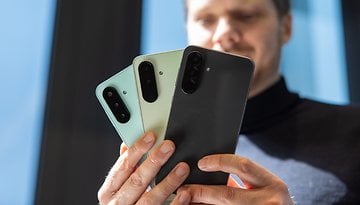iPhone 15 or iPhone 14? Apple's Best-selling Phones Compared
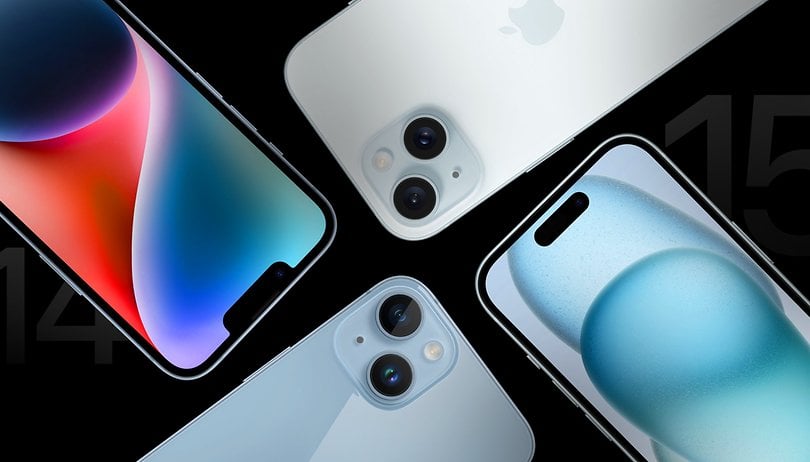

With the release of the iPhone 15 Series, the question arises as it does every year: What are the differences between the iPhone 15 and the iPhone 14? And which model should I buy? In this article, nextpit compares the two vintages and tells you when the iPhone 15 is the right choice for you in 2024—and when the iPhone 14 is.
Apple iPhone 15 (Plus) vs iPhone 14 (Plus): Key characteristics compared
| Base model 2023 | Plus model 2023 | Base Model 2022 | Plus model 2022 | |
|---|---|---|---|---|
| Product | Apple iPhone 15 Plus | Apple iPhone 14 | Apple iPhone 14 Plus | |
| MSRP | from $799 | from $899 | from |
from |
| Image |  |
 |
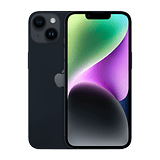 |
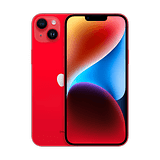 |
| Reviews |
|
|
|
|
| Colors | Pink, Yellow, Green, Blue, Black | Blue, Purple, Yellow, Midnight, Polaris, Product(Red) | ||
| Display | Super Retina XDR Display 6.1" All-Screen OLED Display 2556 x 1179 pixels at 460 ppi 60 Hz refresh rate Dynamic Island |
Super Retina XDR Display 6.7" All-Screen OLED Display 2796 x 1290 pixels at 460 ppi 60 Hz refresh rate Dynamic Island |
Super Retina XDR Display 6.1'' all-screen OLED display 2532 x 1170 pixels at 460 ppi 60 Hz refresh rate |
Super Retina XDR Display 6.7" All-Screen OLED Display 2778 x 1284 pixels at 458 ppi 60 Hz refresh rate |
| SoC | Apple A16 Bionic (4 nm) | Apple A15 Bionic (5 nm) | ||
| Memory | 128 GB, 256 GB, and 512 GB | 128, 256, and 512 GB | ||
| microSD | ❌ | |||
| Main camera | 48 MP | F1.6 aperture | 2.0 µm pixels | sensor-shift OIS | 12 MP | F1.5 aperture | 24 mm focal length | Sensor-Shift OIS | ||
| Ultra-wide angle | 12 MP | F2.4 aperture | 13 mm focal length | 12 MP, F2.4 aperture | ||
| Telephoto lens | ❌ | |||
| Selfie | 12 MP | F1.9 aperture | autofocus | |||
| Battery life | Video playback: 20 hours Video (streaming): 16 hours Audio playback: 80 hours |
Video playback: 26 hours Video (streaming): 20 hours Audio playback: 100 hours |
Video playback: 20 hours Video (streaming): 16 hours Audio playback: 80 hours |
Video playback: 26 hours Video (streaming): 20 hours Audio playback: 100 hours |
| Fast charging | 20 W (cable) 15 W (MagSafe) 7.5 W (Qi) |
20 W (cable) 15 W (MagSafe) 7.5 W (Qi) |
||
| Robustness | IP68, Ceramic Shield, aluminum frame | IP68, Ceramic Shield, aluminum frame | ||
| Connectivity | eSIM, 5G, Wi-Fi 6, NFC, Bluetooth 5.3, UWB, Satellite | eSIM, 5G, Wi-Fi 6, NFC, Bluetooth 5.3, UWB | ||
| Dimensions and weight | 147.6 x 71.6 x 7.80 mm | 171 g | 160.9 x 77.8 x 7.80 mm | 201 g | 146.7 x 71.5 x 7.80 mm | 172 g | 160.8 x 78.1 x 7.80 mm | 203 g |
While we are still awaiting our review units of the new iPhone 15 and iPhone 15 Pro Series, please bear in mind that this comparison is based on our experience with the previous generations and the specifications of the new series.
Table of Contents:
- iPhone 15 vs. iPhone 14: Models and prices
- iPhone 15 vs. iPhone 14: Design and display
- iPhone 15 vs. iPhone 14: Performance
- iPhone 15 vs. iPhone 14: Camera
- iPhone 15 vs. iPhone 14: Battery capacity and charging
- iPhone 15 vs. iPhone 14: Which phone should you choose in 2023?
iPhone 15 vs. iPhone 14: Models and prices
Recently, Apple has repositioned its iPhone categories differently. As a result, the iPhone 15 and iPhone 15 Plus do not feature the latest A-Bionic processors. However, these devices remain powerful and have maintained their price points: $799 for the vanilla variant and $899 for the Plus model.
So, unless there's a specific feature you consider indispensable, the new variant might not be as impactful as previous releases. Furthermore, iPhones do not depreciate in value as quickly as Android smartphones. Thus, the price difference is less significant here, except for certain carrier options.
In any case, my recommendation on which device to purchase currently hinges on these two factors:
If you already own the iPhone 14 (or 14 Plus)
The main distinctions lie in improved performance and camera quality, at least on paper—since we've yet to test the new iPhone generation. In terms of battery life, the duration is essentially the same.
In design aspects, the new iPhone 15 lineup now includes the 'dynamic island.' It's a pleasant addition, but trust me: it's not essential. Regarding software, all iOS 17 features are accessible on both devices. Should I mention the USB-C port? (More on that below.)
If you own an iPhone 13 (mini) or an older version
Go ahead and invest in the iPhone 15 Series. You'll experience enhanced performance, a superior camera, and a contemporary display design for roughly the same price as last year's model. However, if you stumble upon a great discount for the iPhone 14 lineup, this advice might not hold.
iPhone 15 vs. iPhone 14: Design and display
There are a few obvious changes to the design: The new lineup features the dynamic island, replacing the notch that is a heritage from the X series. Another notable change is the USB-C port, replacing the Lightning port—a shift less evident in design than it will be in user experience.
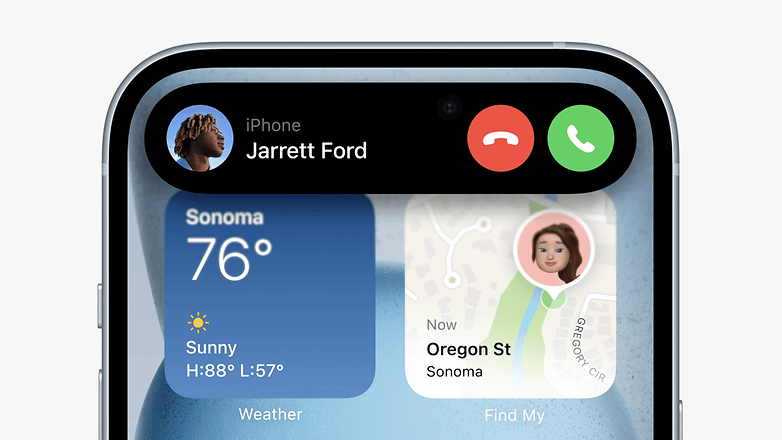
Beyond these, both series sport an aluminum frame. The dimensions and weight have changed only slightly. They come with colored glass on the back and a Ceramic Shield on the front.
For colors, the iPhone 14 comes in Blue, Midnight, Aurora Borealis, Rosé, Yellow, and (PRODUCT)RED. Meanwhile, the iPhone 15 and 15 Plus are offered in pink, yellow, green, blue, and black.
The iPhone 15 has a 6.1-inch "Super Retina XDR" display, while the 15 Plus has a 6.7-inch one. Same size for the iPhone 14 and iPhone 14 Plus. However, the displays are brighter in the new generation, with Apple mentioning a brightness of up to 1,600 nits and even 2,000 nits in sunlight—double the brightness of the iPhone 14.
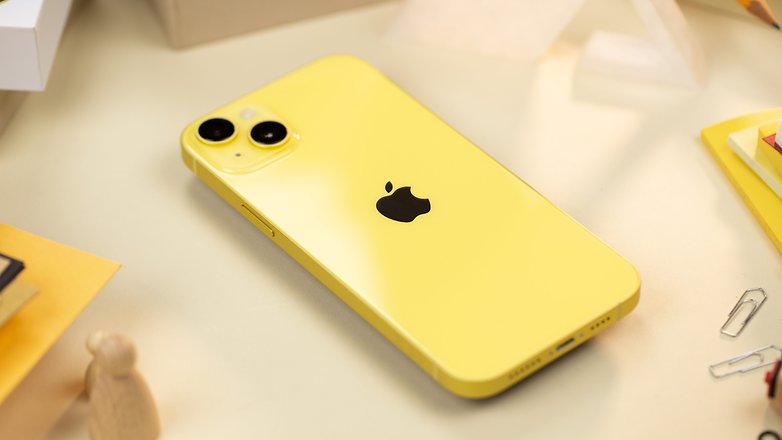
For those prone to accidents, both the iPhone 14 and iPhone 15 lineups feature pre-defined repair prices, aiming to make fixes clear for end users. Also, at $169 for a back glass repair, these iPhones are becoming more repair-friendly.
iPhone 15 vs. iPhone 14: Performance
As mentioned at the beginning, since last year, the non-Pro variants no longer feature Apple's state-of-the-art SoC. While the iPhone 14 is equipped with the A15 Bionic, the iPhone 15 is powered by the A16 Bionic. Both processors are reminiscent of the Pro variants from previous years.
Both series come with 6 GB of RAM, and the rest is typical: No microSD slot, with available storage options of 128 GB, 256 GB, and 512 GB.
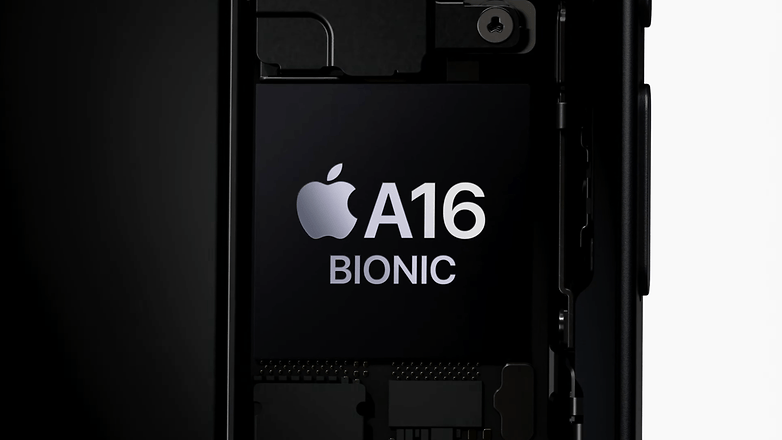
On paper, the iPhone 14 is faster and boasts superior graphics performance. However, in terms of features, both generations are loaded with capabilities like fall detection and car accident detection. Additionally, in situations where Wi-Fi and mobile internet are unavailable, you can use "Emergency SOS" on both lineups to call for help via satellite.
Last but not least, the devices operate on the latest software version, iOS 17, which is packed with features like NameDrop, Contact Posters, live voicemail with real-time transcription, revamped apps such as FaceTime and Messages, and even more accessibility features.
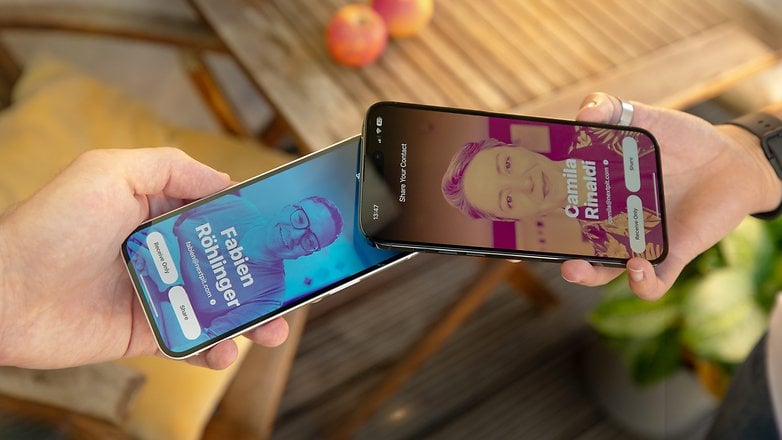
iPhone 15 vs. iPhone 14: Camera
Perhaps the most significant difference between the generations is the improved camera sensor on the iPhone 15—at least on paper. The new iPhone 15 and iPhone 15 Plus feature a primary camera with a 48 MP sensor and an f/1.6 aperture. The ultra-wide-angle camera retains the standard 12 MP resolution with an f/2.4 aperture.
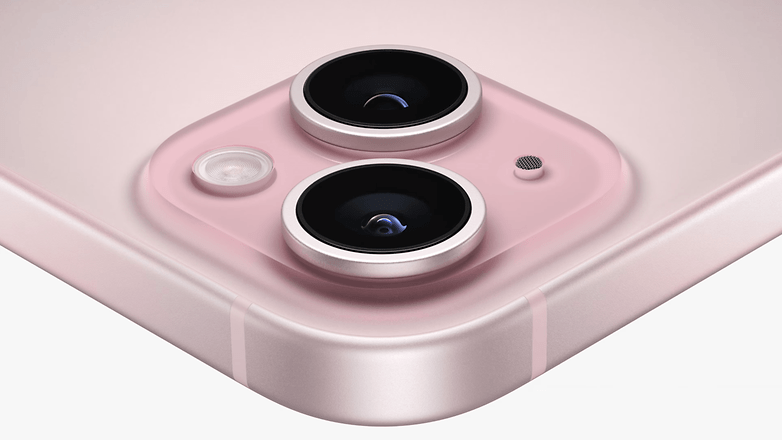
By comparison, the iPhone 14 features a 12 MP main camera with a ƒ/1.5 aperture, as opposed to the ƒ/1.6 aperture. The extra resolution in the iPhone 15 is definitely a valuable upgrade, as it gives you more pixels for the digital zoom. Portrait photos in particular benefit from a "2x" or "3x" zoom level, and here you get more quality with the new iPhone.
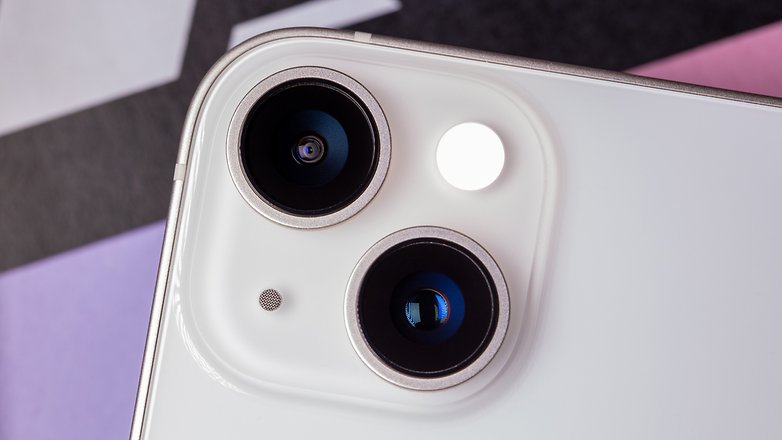
Finally, the front camera is basically the same with a small tweak between generations. Both have 12 megapixels, but on the iPhone 15, we have an aperture of f/2.2 instead of f/2.4. Both sensors have autofocus.
For fans of video: Both series have a 4K Cinematic mode that works with either 24 or 30 frames per second.
Apple iPhone 14 image gallery
iPhone 15 vs. iPhone 14: Battery capacity and charging
The iPhone 15 and iPhone 15 Plus have larger batteries compared to their predecessor models. Nevertheless, Apple claims that the battery life of both models remains essentially the same - after all, the more powerful SoCs need to be supplied with energy somehow. In our test of the iPhone 15, we were able to reliably get through the whole day.
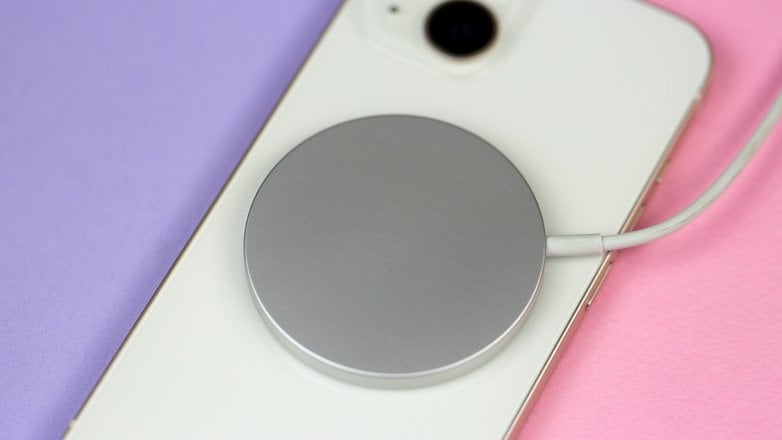
The maximum power for fast charging is 20 W, while wireless charging remains at 15 W. Of course, you can use MagSafe or any Qi-compatible charger for wireless charging so that your older accessories can still be used. What is new with the iPhone 15 series, however, is that charging now takes place via USB Type-C for the first time. However, the new connection has no effect on the charging speed.
iPhone 15 vs. iPhone 14: Which phone should you choose in 2023?
As already mentioned at the beginning: Your decision depends primarily on which device you currently own. The new iPhone 15 generation has improved the camera and offers significantly faster performance. The 15th-generation devices also have a more modern connection for charging and data transfer.
And with all four models currently on sale at the Apple Store, the brand reduced the 2022 model prices by $100 compared to their original MSRPs, now charged by the equivalent iPhone 15 model.
If you already have an iPhone 14, then it is not worth upgrading to the 15. However, if you are coming from an older model or switching from an Android smartphone, then we recommend the iPhone 15. The newer processor generation and the added convenience of USB-C and Dynamic Island are definitely worth the extra cost.
Now I'm curious to hear your opinion: would you swap your iPhone 14 for the iPhone 15? And if you are coming from a different smartphone: Which model would you choose?















